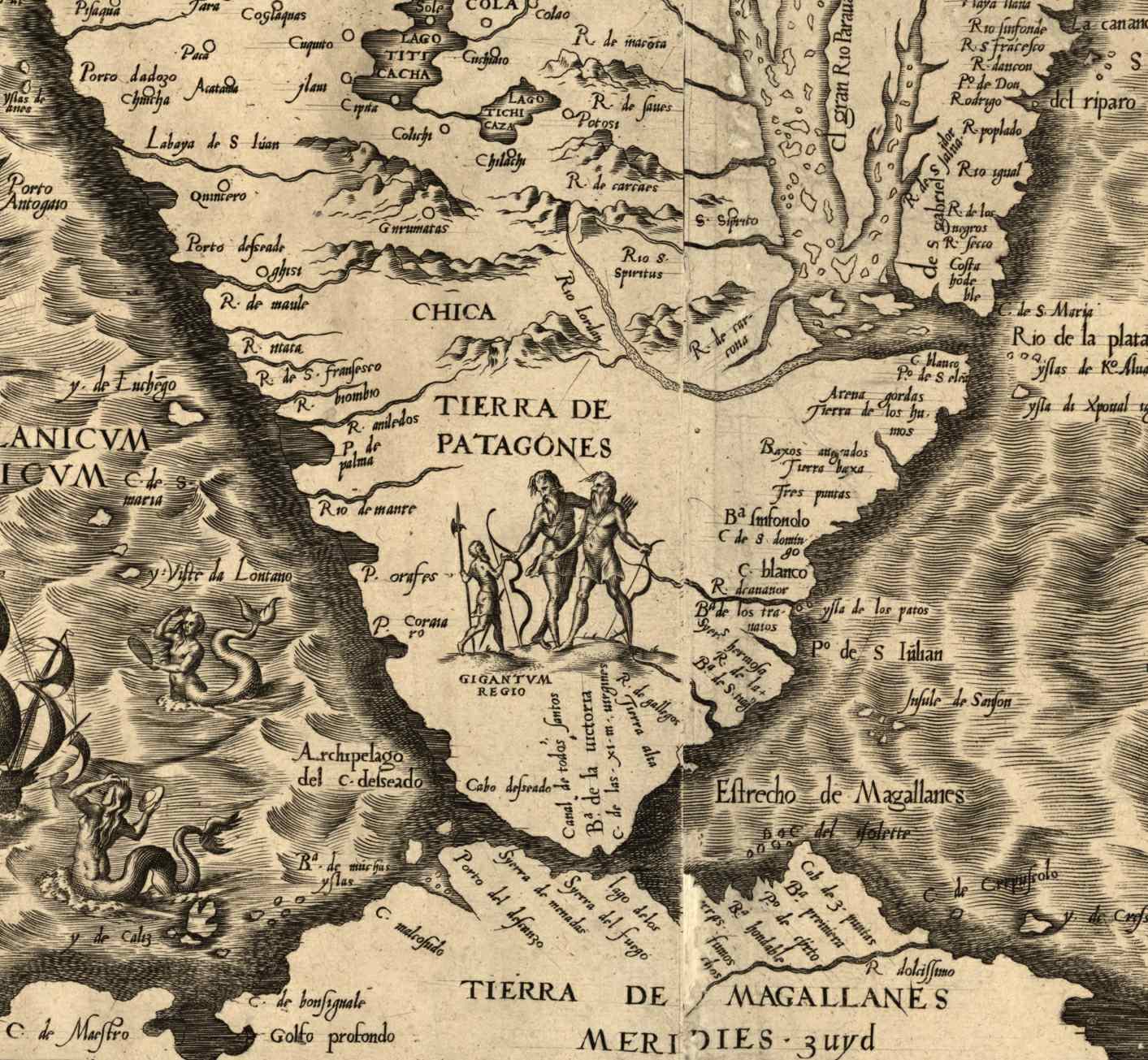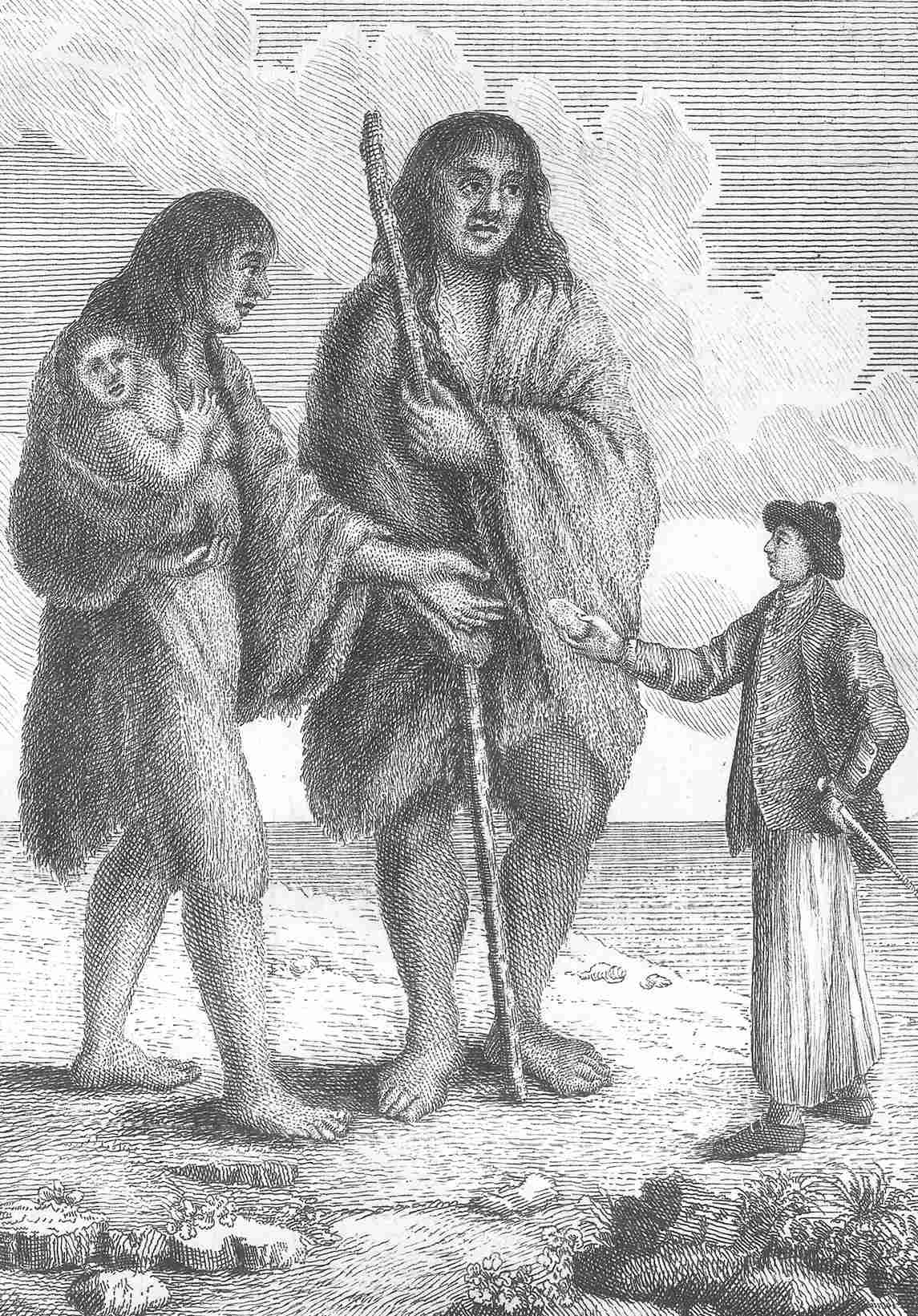As far back as the 1520s, it was widely believed that Portuguese adventurer Ferdinand Magellan was the first person to describe the enigmatic giants of Patagonia. This, however, is far from the case!

Ahmad Ibn Fadlan, the 10th-century Arab geographer and traveler, mostly made land expeditions, but nevertheless decided on the only journey by water in his life. He owns a description of the “big-footed” kind inhabitants of an unknown mainland at the other end of the world. Many researchers believe that he was talking about Patagonia.
Throughout their travels across these territories, more than ten sailors reported seeing strange giants. Different estimations place their height at anywhere between 8.2 feet (2.5 meters) to 3.5 meters (11.5 feet). In the 1590s, Anthony Knivet described the cadavers that he and his crew had found, the length of which was almost 12 feet (a little more than 3.5 meters).
Also in the 1590s, William Adams, an Englishman aboard a Dutch ship rounding Tierra del Fuego reported a violent encounter between his ship’s crew and unnaturally tall natives. The barbarians’ strength was so strong that they were able to hurl enormous rocks that were capable of penetrating the ship’s wooden framework.

Additionally, John Byron, Thomas Cavendish, Juan Esther, and others reported on the gigantic inhabitants of America. Not until the 19th century did the French naturalist Alcide d’Orbigny coin the terms “handsome” and “tall” to characterize the Patagonians.
Through the release of his findings, he disproved the hypothesis that giants ever lived in America. But is it reasonable to put all of your faith in a single book when there have been so many accounts written over the years of encounters with Patagonia’s giants? Many travelers reported having encounters with them during their travels.
An article that caused a sensation was published in Belgium in the year 1902. Slaves of Native American descent were taken to the continent of Europe from the Americas. There were intelligent people among them, which astonished the audience, and one of the “Redskins” representatives was interviewed.
Among the many questions that were asked, one of them brought up the subject of the people who live in faraway regions. In his statement, a native American stated that before the arrival of Europeans, his native territories were home to more than 80 different Indian nationalities.
Some people were highly cultured and educated among them, and there were others who were wild, such as the Patagonians. He claimed that they were exceptionally powerful warriors. Their growth was almost twice as that of humans, and they were readily able to triumph over any beast.
The hunt for giants began with the advent of Europeans. They were shot as though they were animals. As a consequence of this, by the middle of the 18th century, there were virtually no giants left, and the lands were occupied by tribes from the surrounding areas.
This is a significant point to make. It turned out that Magellan, Fadlan, Byron, and Cavendish were able to continue to witness the genuine Patagonian giants, whereas Alside d’Orbigni was no longer present to witness them. After that, it became clear that every passenger had been correct.
The giants did in fact inhabit the lands of America, but they were eradicated by the more advanced Europeans. And in order not to have to repent and be punished for this, the culture of the giants of Patagonia was crossed out from the category of science into mythology and folklore.
In 2013, the skeletal remains of thirteen individuals were uncovered; their average height was approximately three meters. The finding was expected to challenge popular perceptions of the Patagonians, but Spanish specialists believed they had uncovered Gigantopithecus bones.
Photographs of the discovery were shared with Russian scientist Alexander Belov, who stated that the skulls certainly did not satisfy the standards of Gigantopithecus. Perhaps those were Patagonia’s giants?




